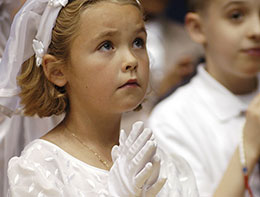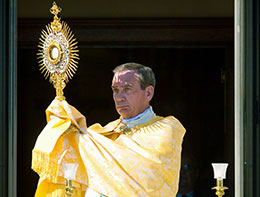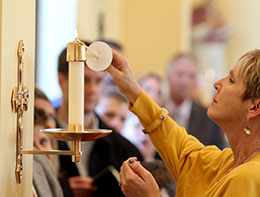‘I am Catholic now’
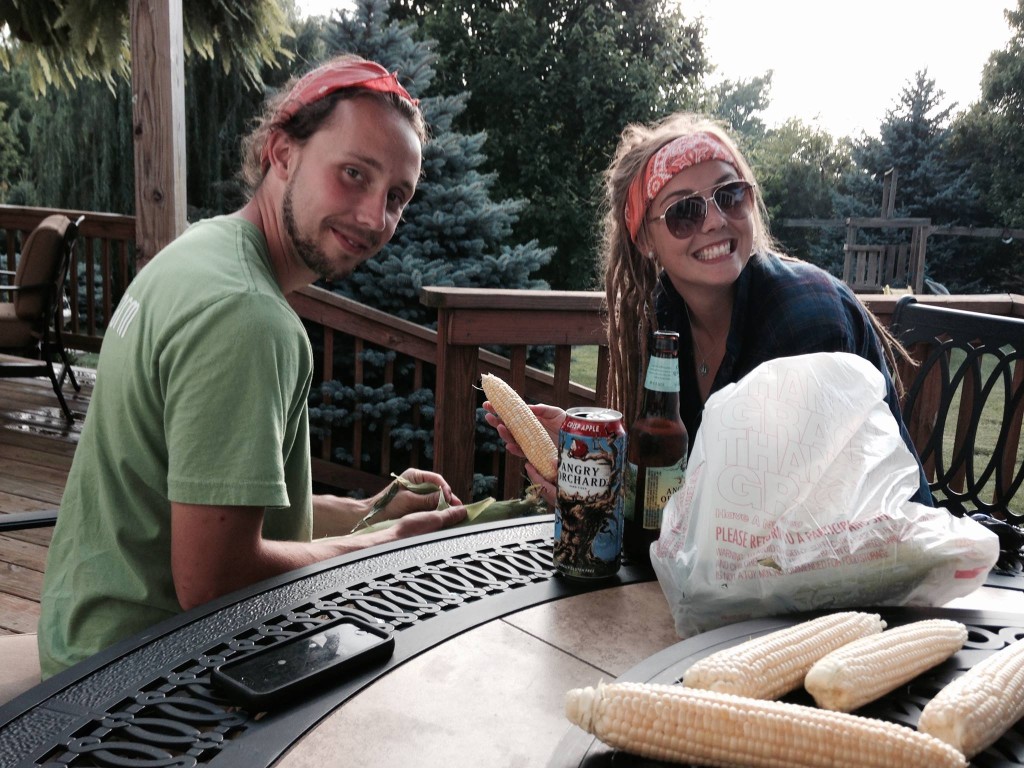
She was raised a nondenominational Protestant and she took religion seriously.
She taught Sunday school. She worked in a leadership role at a Protestant youth camp. She evangelized in shopping malls.
Now, at age 23, she’s a devout Roman Catholic. So is her brother (pictured with her in the photo above), who himself was once active in Protestant evangelization.
Together, they helped bring about their parents’ conversion.
Then, a short time later, they received a startling message from another family member.
But that’s getting ahead of their story.
*****
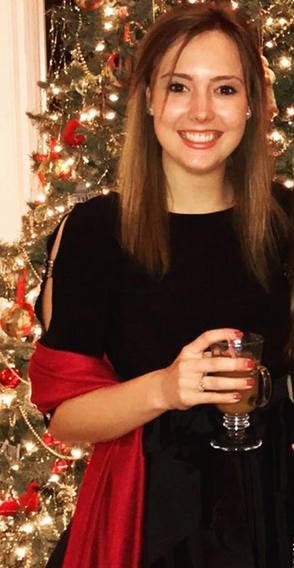 Rachael Marie Margaret Lewis – she signs correspondence with all four names, including the one she took from her Confirmation saint, the convert Margaret Clitherow – sits by the door and holds a cup on this particular morning at a Dayton coffeehouse as she talks about her path to the Faith. She wears a Miraculous Medal and speaks softly but with clarity, precision, and passion.
Rachael Marie Margaret Lewis – she signs correspondence with all four names, including the one she took from her Confirmation saint, the convert Margaret Clitherow – sits by the door and holds a cup on this particular morning at a Dayton coffeehouse as she talks about her path to the Faith. She wears a Miraculous Medal and speaks softly but with clarity, precision, and passion.
Rachael is one of four siblings raised in Wilmington by Kerry and Robyn Lewis, home-schooling parents who held Christian beliefs but no denominational affiliation. “They weren’t Methodist or Evangelical or Baptist,” Rachael says, “which probably helped my conversion because there was no doctrine. We were raised with intentionality in the Christian faith, just not with the Catholic faith.”
Their devout environment wasn’t an insular one.
“People think home-school kids don’t get out,” Rachael says. “But we were very out-and-about. We all played sports.”
Rachael, in fact, was athletic enough to land a swimming scholarship to the University of Louisville, where she studied business. She joined a nondenominational church there, drawn partly by its pancakes and still a long way from the Eucharistic Bread of Life.
“It was a church across the street from my dorm,” she says. “They had free pancakes so I showed up.”
The young student attended services there for a couple of years, but her hunger for truth wasn’t satisfied.
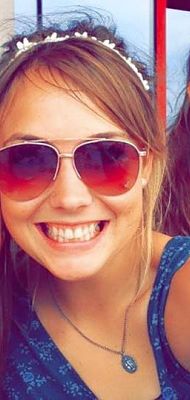 “I could feel that my faith wasn’t full,” Rachael recalls. “I wasn’t really satisfied with the church I was going to. I was at the age where I was away from home and starting to think as an adult. I started questioning. Some things didn’t strike me as true, but I didn’t know what was true. That church was partly true but not fully true.”
“I could feel that my faith wasn’t full,” Rachael recalls. “I wasn’t really satisfied with the church I was going to. I was at the age where I was away from home and starting to think as an adult. I started questioning. Some things didn’t strike me as true, but I didn’t know what was true. That church was partly true but not fully true.”
“I thought, ‘I’m Christian, I’m different, but I’m really dissatisfied. ‘ I was wrestling with the essence of truth. If the one truth is Christ, there has to be a concrete truth under Him. If there are multiple truths under Him, truth shatters.”
An experience with the university swim team left an impression that didn’t seem so significant at the time. “One of my teammates wore a scapular,” she said. “I’d see her take it off to swim and then put it back on again. It’s hard to explain, but, looking back, that created a softening in me toward Catholicism.
“I wasn’t anti-Catholic. I knew Catholics were Christians but I was hesitant towards Catholics because I did not understand the faith. I knew some Catholics who were actively under grace and mercy but I knew many Catholics who lived a very worldly life. I didn’t understand religiosity which confused my understanding of the definition of a Christian.
“A lack of understanding toward baptism was the root cause of the misunderstanding and confusion of the definition of Christian.”
In summer of 2013, she began community service with an evangelical ministry group. “I was filling out the application and it said ‘Tell me about the time you were saved,’” she says. “They wanted time and place. I knew it wasn’t right. I couldn’t write it. I ended up answering ‘Well, I guess I grew up in a Christian house and I try to make good decisions.’ They hired me anyway.”
“We did things like helping relieve Sunday school teachers during the summer. I worked as a waitress. On Saturdays we went out to malls and talked to people, asking ‘Do you know Jesus?’ and then praying with them if they wanted, to make them ‘saved.’”
“I was very against it but I didn’t know why. I’d skip Saturdays. I knew something was ‘off’ but I didn’t know what.”
Rachael graduated in 2014 with a business degree. That summer, she went to work for a nonprofit evangelical summer camp in Texas. She started as a counselor and cook, but was quickly promoted to a leadership post.
“In that culture, you say a prayer and you’re saved. The theology is sola scriptura, and faith without works. Baptism isn’t necessary. I remember a camper came to me and said, ‘I want to give my life to Christ.’ I didn’t really know what to do with that. So we prayed. If I’d known what baptism was, I’d have said, I don’t know, ‘let’s go jump in the lake,’” she adds, laughing.
Her conclusion at the time: “All the churches are somewhat wrong. They all have flaws. That’s where I was.”
 One day she was in her car listening to a Catholic radio station. “They were answering Protestant questions, and one was ‘Why do you pray to Mary?’ I listened and I thought ‘I get that.’ I experienced another softening toward the Catholic faith.”
One day she was in her car listening to a Catholic radio station. “They were answering Protestant questions, and one was ‘Why do you pray to Mary?’ I listened and I thought ‘I get that.’ I experienced another softening toward the Catholic faith.”
In fall of 2014, she began graduate work in counseling at the University of Akron.
“I was trying to find a church in Akron. I was Googling. I found one that was super emotional, with bright lights, typically modern. I asked myself ‘How can I possibly choose a church? I don’t know what all these different doctrines mean, all these teachings. I’m a young adult out of college. What do I want my life to look like?’
She hadn’t arrived at any decisions, but she attended Mass that Christmas at St. Columbkille Catholic Church in Wilmington.
Weeks later, she made an odd decision for a non-Catholic: she practiced Lent.
“I had no Catholic education; I was just trying to grow,” she said. “I knew Lent leads to Easter, so it’s a good time to pray and fast.” She phoned a Catholic friend to learn about Lenten practices.
Coincidentally – or perhaps not, because the actions of grace aren’t random – her older brother Adam was undergoing a transformation of his own.
But Rachael didn’t know it. Not yet.
*****
Adam, now 26, had been a business major at Milligan College, a Protestant liberal arts school in East Tennessee. After Milligan, he volunteered for two years in a number of religious activities at a Southern Baptist church in Dayton, helping with faith formation and co-leading young adults in Bible studies.
“I was very active,” Adam says. “I was devoting myself to the Lord the best way I knew how.”
During his last undergraduate semester. Adam entered a foreign-studies program that took him to an Anglican-affiliated school, Uganda Christian University in East Africa. “It had a big effect on my worldview,” he recalls. He moved on to graduate studies at Wright State University and began attending a Southern Baptist church in Dayton.
 A scholarship “provided me with time to pursue academics but also to spend more time reading about the Christian religion,” Adam says. A friend, Sylvia Ulmer, had posted Scott Hahn’s Fourth Cup lecture on Facebook. Adam read it attentively. His interest in history and theology led him to the writings of the early Church Fathers (Ignatius, Augustine and Justin), Stephen K. Ray’s “Crossing the Tiber: Evangelical Protestants Discover the Historical Church” (given to Adam by a new friend, Spencer, who was to become his sponsor) and The Didache.
A scholarship “provided me with time to pursue academics but also to spend more time reading about the Christian religion,” Adam says. A friend, Sylvia Ulmer, had posted Scott Hahn’s Fourth Cup lecture on Facebook. Adam read it attentively. His interest in history and theology led him to the writings of the early Church Fathers (Ignatius, Augustine and Justin), Stephen K. Ray’s “Crossing the Tiber: Evangelical Protestants Discover the Historical Church” (given to Adam by a new friend, Spencer, who was to become his sponsor) and The Didache.
He also read “Hail, Holy Queen” and “Rome Sweet Home: Our Journey to Catholicism” by Dr. Hahn (a former Presybterian minister) and his wife, Kimberly.
“I had always begun with the assumption that Rome was wrong, had been proven wrong, and that this didn’t need to be re-proven,” Adam says. He read classic Catholic literature broadly, including the Epistles of St. Ignatius, St. Augustine’s Confessions, and Blessed John Henry Cardinal Newman’s “Apologia Pro Vita Sua.”
“I had many questions about the status of Mary, the saints, why is there a pope,” he says, but the liturgy of the Last Supper came to dominate his thinking about the issues.
“It always came back to the Eucharist,” he says. “If the Eucharist is the body, blood, soul, and divinity of Jesus, I had to be where He is. If I understood that, I would come to understand Mary, the saints, the pope.”
And with regard to the Eucharist, Adam eventually came to a realization: “His Real Presence is there and I had to be there.”
*****
Rachael was still practicing Lent when spring break arrived. She and Adam made plans to spend the break together with an extended hiking trip on an Ohio trail.
 “One night it was freezing and we made a bonfire,” she recalls. [Adam’s photo of the bonfire is at left]. “We were in the middle of the woods with hammocks in trees, talking. He told me he was becoming Catholic. He said ‘I haven’t told anybody.’”
“One night it was freezing and we made a bonfire,” she recalls. [Adam’s photo of the bonfire is at left]. “We were in the middle of the woods with hammocks in trees, talking. He told me he was becoming Catholic. He said ‘I haven’t told anybody.’”
As Adam remembers it, “I just put my heart out there. She received me very well. Sometimes when the Catholic faith is brought up there’s great hatred.”
“I had no problem with it,” Rachael says. “That shocked him. We talked for hours. I thought, I need to read a whole lot of stuff.
“Adam is much more academic than I am. He had dived into the Reformation and read the Church fathers. Adam came to the faith via theology, reading, and prayer, while I came to the faith via prayer, suffering and philosophical questioning of life.
“People always find it encouraging that two extremely different people found Truth through various streams.
“Something that has impacted both Adam and me is the thought process shift of Salvation, Christ, being a person rather than an event. That changes one’s whole ideology and theological stance on Christianity, mercy and our pursuit of holiness.”
Rachael previously had agreed to another stint at the Texas youth camp, so she returned there a short time later for a leadership retreat to plan summer activities.
Adam meanwhile recommended that she read “Rome Sweet Home.”
“I hadn’t read the book but I had it in my backpack when I got back to Texas,” she says. “Adam was fasting and praying for me.”
She sent her brother a message. “I told him ‘I need you to write down why I should become Catholic.’ I wanted bullet points. I started Googling and reading. I looked up answers on sola scriptura. I jumped to [learning about] the Eucharist. I thought if I became Catholic it would be a three-year process.
“Then I told myself: If the Eucharist is true, I have to do that now. And to not become Catholic is being disobedient. I want nothing less than to partake in it.”
It didn’t take three years. It took three weeks.
“One day, the middle of the day, I was lying in bed, just in starfish position, crying. And I thought ‘I’m Catholic.’ And it sounds so radical, but everything came together.’
*****
For Adam, Rachael’s experience was the final push toward his own full conversion.
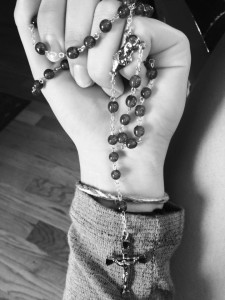 “I could see where the Lord was leading me,’ he said. “I prayed and fasted. It was not merely an academic, philosophical, and theological discovery; I had experiences leading there, amazing things. You could call some of them charismatic. I was still active in the [Southern Baptist] church but felt it was near time to come out of my Catholic closet. I said ‘Lord, I just need one more unlikely affirmation.’
“I could see where the Lord was leading me,’ he said. “I prayed and fasted. It was not merely an academic, philosophical, and theological discovery; I had experiences leading there, amazing things. You could call some of them charismatic. I was still active in the [Southern Baptist] church but felt it was near time to come out of my Catholic closet. I said ‘Lord, I just need one more unlikely affirmation.’
“Rachael called me out of the blue and said ‘I am becoming Catholic.’ She gave me that final affirmation.”
For brother and sister alike, spiritual comfort helped relieve the material anxiety of dismantling former relationships.
“I knew I was going to lose my community,” Rachael said. “It was really scary. Adam and I lost everything. We lost a culture. But I realized: ‘I am Catholic now. I have to do this.’”
When Adam left the Southern Baptist church, he says, “There was a real loss of community and relationships. It was and is very painful.
“Yet the real loss and severance is worth having full communion with Jesus and His Church. It was emotionally and relationally the hardest decision I’ve made. But it is worth it, not because my experience says so, but because Christ promises it.”
Leaving their old life behind included Rachael’s abandonment of plans to work at the Texas camp. As a condition of employment, “I had signed a statement including ‘I believe we’re saved by faith alone.’ I called my boss and said I was Catholic; I can’t adhere to this.”
It was a big step. But the scariest moment of revelation remained: Telling their parents.
*****
“We met with them at a restaurant in Centerville,” Rachael recalls. “We had no idea how it was going to go. My mom always thought not all Catholics weren’t Christian. We sat down and my mom said ‘What is it?’ We had a four-hour conversation, and there was a lot of crying. My sister Alyssa [age 17 at the time, and pictured with Rachael in the photo at right] said ‘I want to become Catholic too.’”
Adam remembers: “We took my parents to breakfast on a Sunday morning and they were wondering why we hadn’t been at church that day.
“We had actually been at Mass, although we couldn’t receive [Communion] yet. We just began to share our conversions. They were very parental, very loving. I think they were caught off guard more than anything. My father saw the historical value and reverence of the Church. My mother was a little more apprehensive.”
Rachael and Adam invited their parents to join them for weekend classes in the Rite of Christian Initiation of Adults (RCIA). “We said we’d love you to go so you can learn about it and understand where we are,” Rachael recalls.
“We said of course we want you to convert,” Adam says, “but for now just to understand, because a lot of prejudice comes from misunderstanding. Bishop Fulton Sheen has a quote: ‘There are not more than 100 people in the world who truly hate the Catholic Church, but there are millions who hate what they perceive to be the Catholic Church.’”
Their parents agreed to attend the RCIA classes, led by Father Satish Joseph at Dayton’s Immaculate Conception Catholic Church. “Rachael and I spent a lot of time praying for our family,” Adam says. “I was nervous the first day [of RCIA class] about whether they’d show up. But they drove from Wilmington to Dayton every weekend from August to Pentecost.”
Rachael describes what happened in simple terms: “They went to RCIA and slowly came to the conclusion the Eucharist is real.”
Even at that, the astonishing work of grace held another surprise for the family.
*****
Rachael and Adam traveled to Philadelphia in September to join the crowd in welcoming Pope Francis’s visit. Though the siblings had no accommodations in the city, they planned to watch the papal parade to the Cathedral Basilica of Saints Peter and Paul.
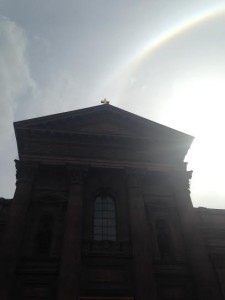 “Adam and I were homeless, wandering around in backpacks,” Rachael says.
“Adam and I were homeless, wandering around in backpacks,” Rachael says.
“We slept in a parking garage,” Adam says, “then the day of the parade we slept on the steps of the basilica.”
A rainbow appeared over the cathedral as soon as the pope entered the structure. (Adam’s photograph of the rainbow is at left.) Rachael’s phone alerted her to a text message. It was from their maternal grandmother, who had earlier taken an interest in the family’s religious experiences.
“She sent us a text saying ‘I went to Confession and I’m in full communion with the Catholic Church,” Rachael says. “We just literally sobbed.”
“It was an amazing moment,” Adam says.
“My grandmother was raised Catholic but married young to a devout Methodist and just kind of stopped going. After 55 years she went to Confession and took the Eucharist the next day.”
*****
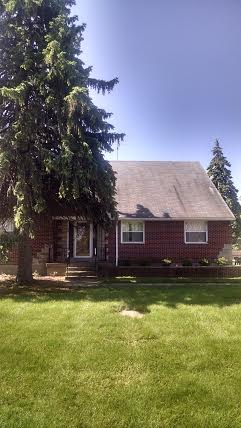 Rachael is living with four other young Catholic women, at the former rectory (photo, right) of Dayton’s Holy Cross church.
Rachael is living with four other young Catholic women, at the former rectory (photo, right) of Dayton’s Holy Cross church.
Adam has landed a job as direct mail coordinator for the Dynamic Catholic Institute. Their younger sister Alyssa attends Siena College, a Catholic liberal arts school near Albany, New York. (One of Rachael’s housemates is Katrina Boos, who was sponsor for Alyssa’s reception into the faith.)
Holy Cross, a century-old Lithuanian church, is part of a four-parish group and no longer uses the rectory for a priest in residence. The five women have made it their home and are committed to a life of faith and prayer.
“After my conversion I thought ‘Now I have no plan. I need community.’” Rachael says. “I lost an entire culture and community, which a very real reality of the initial conversion to Catholicism. But, after all, we are called to suffering with our Lord. For Truth, under Truth and in Truth do we slowly burn down our selfishness and become strangers to this world, to become holy.”
Prayer is a foundation of community at the former rectory.
“We have prayer in mornings and evenings, so there’s Liturgy of the Hours going on. But all of us work, so we can’t have prayer throughout the day. We want to just live and grow in faith, and have a place where other young people can come. We have the intent and space to live in prayer.”
Adam says he’d like to see more empty rectories opened to community living for young adults. He and a former roommate went their separate ways after Adam’s conversion. He’s since shared lodging with retired Salesian priest Terry O’Donnell but plans a move to the Cincinnati/Northern Kentucky area and hopes to find a Catholic roommate or roommates.
“We’re very blessed,” Adam says. “Rachael and I were brought up in a devout Christian home. Our parents taught us to pray and read the Scriptures. After undergoing the catechism, I realized my parents were living the catechism, as the domestic church, without knowing it.”
His sister agrees: “Our parents raised us in a very good way. We were open to the church, and we brought them to the faith. My dad says ‘what is more beautiful than to have your adult children convert you?’
“Our parents raised us in the faith and through that, we found the truest form of the faith – through the Eucharist.”
Posted:
Go To News Story Archives

